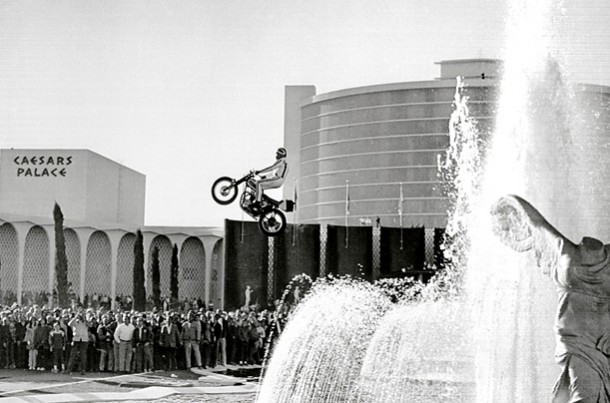Come to think of it, a big part of the issue here is: at what time scale do you want to be challenged?
In AD&D, this was not really a thing that had been thought about. The overall game was not so much planned as a bunch of emergent things. To what degree there was a time scale, it was the day or longer.
3e was the first edition to actually design around a particular time scale. The DMG went into some detail on how a typical adventuring day would have four encounters of varying levels, with the idea being that an encounter with the same level as the party would consume 20-25% of your available resources (primarily hit points and spells (in which I include similar daily abilities like Lay on Hands or Bardic Music)). So while any one fight would be seen as "easy", by the time you get to the fourth fight you're in bad shape which makes it actually dangerous. There were three problems with this approach:
- What I like to call the "Britannia*" problem: it is hard to gauge how well you're doing. You've been in one fight, and now the Rogue is at half hp, the wizard has cast her fireball, and the cleric has cast one bless and one cure moderate wounds to heal up the fighter. Is this good or bad?
- Unless there is an element of time pressure, you can usually retreat from the dungeon, rest up, and go at it again ("The five-minute adventuring day").
- The wand of cure light wounds (or its later cousin, wand of lesser vigor) nullifies hp attrition, so the only real attrition becomes spells.
4e instead focused hard on the individual encounter as the "challenge unit". Some resources/abilities were daily, but the focus was on the actual encounter being dangerous in itself, and after the encounter you'd be able to replenish most of your expended resources. 5e returned to a mostly daily-focused resource model, with a small number of abilities restored on a short rest which is not really the same as encounter abilities (since it takes an hour to restore them, not five minutes).
I posit that if your goal is to make the game's challenge about attrition over the course of a day, you will generally not be able to make healing an interesting combat role. If someone's taking enough damage to require in-combat healing, something has gone seriously wrong. If you want in-combat healing to be a thing, you need to have the game balanced around challenging individual encounters.
* Britannia is an old board game where each player plays a sequence of tribes/peoples invading Britain, starting with the Romans and ending with the Normans. Over the course of the game each player might play 4-5 different tribes, and the game is scored at various points depending on how many areas each tribe is controlling. However, one of the players is of course playing the Romans, and that player's points are strongly front-loaded. So just because that player has 2-3 times as many points as other players, it doesn't necessarily mean they're "ahead", because they're not getting many more points – but that makes it hard to gauge how well the different players are actually doing.




